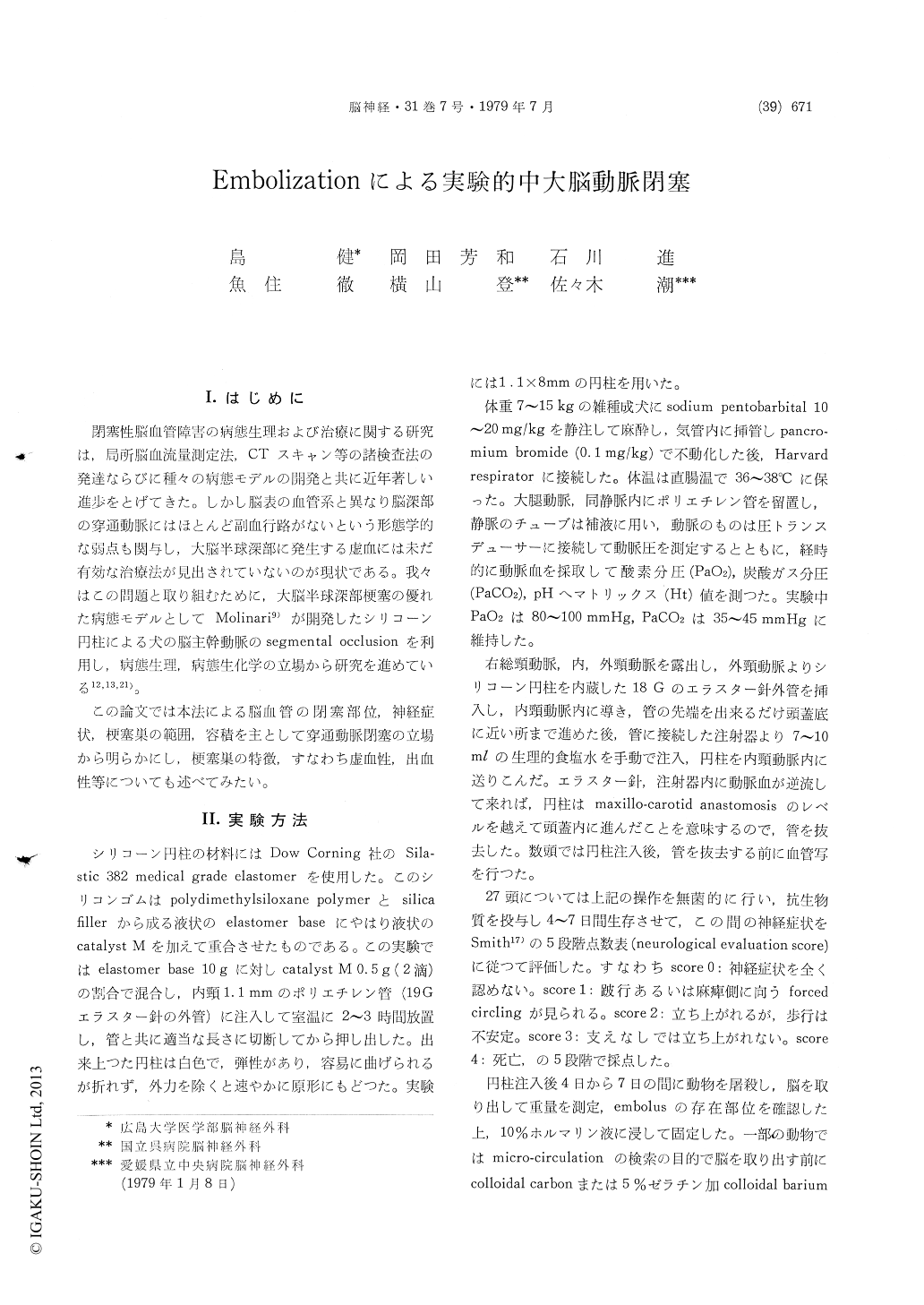Japanese
English
- 有料閲覧
- Abstract 文献概要
- 1ページ目 Look Inside
I.はじめに
閉塞性脳血管障害の病態生理および治療に関する研究は,局所脳血流量測定法,CTスキャン等の諸検査法の発達ならびに種々の病態モデルの開発と共に近年著しい進歩をとげてきた。しかし脳表の血管系と異なり脳深部の穿通動脈にはほとんど副血行路がないという形態学的な弱点も関与し,大脳半球深部に発生する虚血には未だ有効な治療法が見出されていないのが現状である。我々はこの問題と取り組むために,大脳半球深部梗塞の優れた病態モデルとしてMolinari9)が開発したシリコーン円柱による犬の脳主幹動脈のsegmental occlusionを利用し,病態生理,病態生化学の立場から研究を進めている12,13,21)。
この論文では本法による脳血管の閉塞部位,神経症状,梗塞巣の範囲,容積を主として穿通動脈閉塞の立場から明らかにし,梗塞巣の特徴,すなわち虚血性,出血性等についても述べてみたい。
A silicone rubber cylinder, 1.1 mm in diameter and 8mm in length, was injected into the cervical internal carotid artery of dogs. Without perform-ing craniectomy this model made it possible to obstruct the trunk of the middle cerebral artery segmentally at the rate of 75%.
The animals were kept alive in this state for 4 to 7 days and neurological findings during this period, such as hemiparesis, forced circling and homonymous hemianopsia, were estimated on the basis of Smith's five step neurological evaluation score method. The average score was 2.4+1.3 and the mortality rate was 18.5%.
On coronal sections of the brain, there were infarction at a high rate in such deeply locatedareas as the thalamus, caudate nucleus and internal capsule. A thift of midline structures to the op-posite side due to brain swelling was seen in almost all cases. The infarct volume was 4.6±0.5cm3 on an average and there was some correlation between neurological symptoms and degree of severity of infarction.
Many of the infarctions were ischemic, but 4 were hemorrhagic. Study was made on the de-velopmental mechanism of these infarctions. The difference between disruption of blood flow induced by embolization and that by trapping of the middle cerebral artery was described from the anatomical point of view and the importance of ischemia of the perforating arterial territory was discussed.
On the other hand, in all 5 cases in which the embolus was lodged in both the anterior cerebral artery and posterior communicating artery, acute brain swelling developed and they died within 24 hours. This suggests the possibility that ischemia of the hypothalamus play an important role in production of acute ischemic brain swelling. It is considered that this model will be an excellent stroke model for acute cerebral infarction from the standpoint of pathophysiological and biochemical research.

Copyright © 1979, Igaku-Shoin Ltd. All rights reserved.


